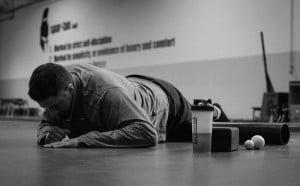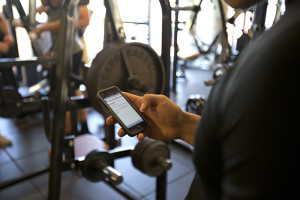
“If he is taking his ease, give him no rest.” Sun Tzu, The Art of War
With all the attention paid to what movements and exercises an athlete is doing during a training session and how they are doing those movements, one variable is often overlooked, rest.
The rest period, or time between exercises, largely dictates the type of training stimulus that an athlete is getting. When you take into account that different athletes have different muscles fiber types and distributions, as well as training backgrounds, the rest periods become clearly important. We already know that the athletes’ sport is the biggest source of training stimulus, so rest period is a powerful tool that determines what types of training an athlete is actually doing. Consider two different athletes, a soccer player and football player. The soccer player will tend to need more rest to train strength that the football player. A soccer player spends most of their time doing aerobic and intermittent efforts, so strength training is a much different stimulus then they are used to. Football players, on the other hand spend all their time doing short intense bursts, so strength training is already more in line with what they are used to.
As performance coaches we always have to remember that the end goal for our athletes is movement efficiency and sport proficiency. In other words, we are helping athletes get better at their sport, as opposed to always striving for new peak performances in the gym. When we analyze the Sparta Signatures from our force plate test we find that predictive models show that the best jumpers (height) are the athletes who are most prone to thigh (hamstring, quad, adductor) injures. With these high performing athletes the goal is not to increase their vertical jump (and make them more injury prone), but to increase their ability to repeat their best performances. This type of consistency is one of the keys to being a successful elite athlete. A controlled rest period, combined with high quality movement efforts is the best way to train consistency. Consistency, by this definition, does not separate strength and fitness.

So what are best practices when it comes to rest periods? At Sparta (and with our software partners) athletes use a personal in-app timer on their phone that individualizes their rest period. We find that group timers and tablets (iPads, etc.) don’t allow enough control for individual needs. The athletes’ timer is set “globally,” which includes the movement itself and time to re-rack, change weights etc. to avoid the common problem of rushing movement quality or misjudging the work duration before resting a specific ratio thereof.
This global timer takes out any subjectivity that would be involved with a timer just used for rest between sets and encourages quality movements, not rushing. Change the timer based on the athletes needs. Our timers are set using the Sparta Signature, and changes by 30 seconds when the the t score for the athletes lowest variable changes by 5 points. As an example, when the t score for the athletes lowest variable is below 50 to focus on greater force production (i.e. getting stronger), the athlete will be on a 4:00 global timer to allow for more rest time, video feedback, and more time to visualize and ingrain a movement pattern. When that t scores get over 50, the global timer decreases by 30 seconds to 3:30 and such intervals continue with as athletes produce greater force (they already posses enough strength). This protocol could be changed based on in-season and off-season training to emphasize more fitness, or more strength.
The timer has broad multiplying effects on an athlete’s intensity (weight lifted, running speed), and we have found the statistical effects are as important than the exercise chosen, in fact, more so in some cases. Like all data, we just had to do something about it and the app allows the individual timer needs to be leveraged in a team setting.